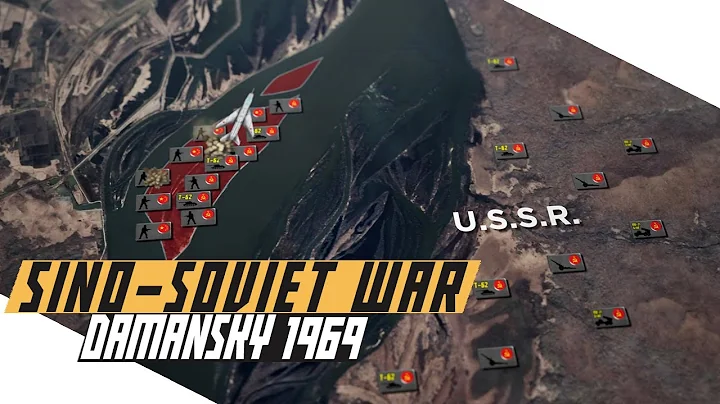60 years ago, miners here worked day and night to mine ore and paid for 47% of the former Soviet Union's foreign debt for our country. The mysterious mineral veins located in Xinjiang once disappeared from the map, leaving only a string of mysterious code names. has been classified as a highly confidential area of the country since the founding of the People's Republic of China. Hidden here is a mysterious pit that is closely related to the fate of the Republic - Coco Tuohai Mine No. 3. This video of will take you to learn about this mysterious mine.

Keketuohai No. 3 Mine is located in Keketuohai on the edge of Jungar Basin in Xinjiang. There is no sea in Keketuo Sea. In Mongolian it means "blue river bend". The Keketuohai mining area was discovered in 1930. At that time, only local ethnic minorities mined the outcrop of No. 3 vein and used it as jewelry decoration materials.
In 1935, two geological teams from the former Soviet Union came to the area. In order to promote ore prospecting, they carried various non-ferrous and rare metal mineral samples with them, mobilized farmers and herdsmen to collect useful minerals in the Altai Mountains, and handed them over to the geological team to purchase based on quality and price. Based on mining sites reported by herders, geologists have for the first time marked eight sites of beryl mineralization on geological maps of half of the area. Among them, the Keketuohai deposit in Fuyun County was discovered by locals in 1935.

Keketuohai No. 3 mine
is listed as one of the eight beryl mineral sites. The discovery of this rare metal deposit rich in beryl (beryllium) attracted the attention of the former Soviet Union, the scientific and technological community, geological surveys and mining personnel. They came to China many times to engage in geological exploration, and conducted trial mining in the Keketuohai mining area with No. 3 vein as the main vein, mining beryl and tantalum, niobium, and iron ores. According to the Sino-Soviet Alliance of Friendship and Mutual Assistance Treaty at that time, the "Ashan Mine Management Office of Sino-Soviet Nonferrous and Rare Metals Co., Ltd." was established in March 1950. On January 1, 1955, all enterprises in the mining area were handed over to China for independent operation. The former Ashan Mine Management Office was renamed as the Kotuohai Mine Management Office of Xinjiang Nonferrous Metals Company, directly under the Nonferrous Metals Administration Bureau of the Ministry of Metallurgy. In 1958, it was renamed Keketuohai Mining Bureau.

In the 1950s, when the country was developing the Keketuohai rare metal mine, the town attracted more than 40,000 people from all over the country. In addition, experts from the former Soviet Union brought advanced equipment and built Russian-style buildings. Keketuohai became the "Little Shanghai in the West" with the richest material and spiritual life in Xinjiang at that time. Keketuohai No. 3 mine is a pegmatite vein mine. It is 200 meters deep, 250 meters long and 240 meters wide. The winding road on the side wall is in a spiral shape, and the accumulated water flows to the middle of the pit. Of the more than 140 known useful minerals in the world, 86 can be found in the Keketuohai No. 3 Mine, and their reserves are extremely high. Among them, beryllium resources rank first in China, and cesium, lithium, and tantalum resources rank fifth, sixth, and ninth in China respectively. There are many minerals, high grade, abundant reserves, well-defined layers and large-scale mining. It is unique in China and rare in the world.

It is as famous as the world's most famous Bernic Lake Mine in Canada. It is recognized by the global geological community as the "Museum of Natural Geology". In July 1960, the former Soviet Union unilaterally tore up the economic assistance agreement with China, withdrew experts, and forced China to repay its debt within a deadline. The total foreign debt is equivalent to more than 5.2 billion yuan. According to the agreement, all foreign debts should be paid off before 1965. At that time, China was very poor. There's no way I can afford that much money. The top leaders of the central government decided to pay off the debt with rare minerals that the Soviet Union urgently needed. By 1964, China had repaid all loans and interest owed to the former Soviet Union in the 1950s one year ahead of schedule. Before October 1965, the sugar loan and trade debts were paid off, and all debts owed to the former Soviet Union were paid off. According to data, the value of the mineral repayments of the Keketuohai Mining Bureau accounts for about 47% of the total foreign debt.
not only paid off the debt. Keketuohai also provides most of the rare metals for my country's artificial satellite . At 21:35 on April 24, 1970, China's first self-developed artificial satellite "Dongfanghong-1" was successfully launched by the Long March 1 rocket. This makes China the fifth country in the world that can independently develop and launch artificial satellites.The Dongfanghong-1 satellite uses cesium provided by Coco Tuohai.

According to local people, there are more than 20 million tons of rare ores under the mountains of Tuohai, but they are now protected. Today, Keketuohai has become part of the national geological park and is visited by tourists from all over the world. Tourists visit. Inside the mine, we seem to be able to see the former Keketuohai No. 3 vein. Countless magnificent minerals are wrapped under the rock and soil, quietly waiting for people to mine it. Coco Tuohai No. 3 vein is like a medal of merit that will never fade, symbolizing the most difficult years spent by our ancestors. Okay, that’s it for this video. If you are interested, you can like and collect it. See you next time!





















